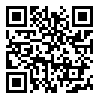Volume 5, Issue 4 (2013)
Iran J War Public Health 2013, 5(4): 61-64 |
Back to browse issues page
Article Type:
Subject:
History
Received: 2013/05/1 | Accepted: 2013/10/22 | Published: 2013/12/11
Received: 2013/05/1 | Accepted: 2013/10/22 | Published: 2013/12/11
How to cite this article
Forogh B, Raissi G R, Ahadi T, Fereshtehnejad M, Yazdi-Bahri M. Influence of Burst Repetitive Transcranial Magnetic Stimulation on chronic tinnitus. Iran J War Public Health 2013; 5 (4) :61-64
URL: http://ijwph.ir/article-1-322-en.html
URL: http://ijwph.ir/article-1-322-en.html
Download citation:
BibTeX | RIS | EndNote | Medlars | ProCite | Reference Manager | RefWorks
Send citation to:



Rights and permissions
BibTeX | RIS | EndNote | Medlars | ProCite | Reference Manager | RefWorks
Send citation to:
Authors
Bijan Forogh1, Gholam Reza Raissi1, Tannaz Ahadi *2, Mohammad Fereshtehnejad3, Maryam Yazdi-Bahri4
1- Iran University of Medical Sciences, Physical Medicine and Rehabilitation Department,Firoozgar Hospital,Valiasr Sq, Tehran Iran
2- IranUniversity of Medical Sciences ,tannaz.ahadi@yahoo.com
3- Department of Neurobiology, Care Sciences, and Society (NVS), Karolinska, Department of Neurobiology, Care Sciences, and Society (NVS), KarolinskaInstitutet, Stockholm, Sweden
4- IranUniversity of Medical Sciences, Physical Medicine and Rehabilitation Department,Firoozgar Hospital,Valiasr Sq, Tehran Iran
2- IranUniversity of Medical Sciences ,
3- Department of Neurobiology, Care Sciences, and Society (NVS), Karolinska, Department of Neurobiology, Care Sciences, and Society (NVS), KarolinskaInstitutet, Stockholm, Sweden
4- IranUniversity of Medical Sciences, Physical Medicine and Rehabilitation Department,Firoozgar Hospital,Valiasr Sq, Tehran Iran
Abstract (10085 Views)
Background: Tinnitus is the perception of sound in the absence of an auditory stimulus and it is a common symptom in hearing system disorders. Chronic form affecting 5 to 15% of general population and in 1 to 3% of the population, it cause severe impairment of quality of life. Repetitive Transcranial Magnetic Stimulation (rTMS) effects on tinnitus have been evaluated in recent decades and has been shown that rTMS treatments may improve tinnitus symptoms. In this study the effects of Burst rTMS on patients with chronic tinnitus have been investigated.
Methods: The study was a clinical trial. 28 patients, including 4 women (14.3%) and 24 men (85.7%) were treated with Burst rTMS in 4 sessions and severity of tinnitus was evaluated with visual analog scale before, after and on month after treatment.
Results: the severity of tinnitus significantly reduced after treatment and one month later, with statistically significant difference (P value=0.001).
Conclusion: According to the results of treatment including reducing the intensity of tinnitus with statistically significant difference and lasting effects even after one month of treatment, Burst rTMS can be considered as an effective treatment.
Send email to the article author








